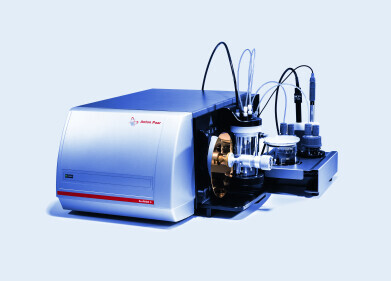Laboratory Products
What Makes Babies' Skin So Good at Healing?
Oct 24 2020
New research from Washington State University (WSU) has offered insight into why the skin of newborn babies is so good at regenerating, and how to replicate the self-healing properties in adults. The team experimented with activating a specific genetic factor in adult mice and observed that it drastically accelerated the healing process of skin at a rate similar to that seen in newborn babies.
The findings were published in the journal eLife, with co-author Iwona Driskell asserting the study could have exciting implications for treating wounds and preventing the aging process. “We were able to take the innate ability of young, neonatal skin to regenerate and transfer that ability to old skin," says Driskell, an assistant professor at the WSU School of Molecular Biosciences. "We have shown in principle that this kind of regeneration is possible."
Capturing the regenerative properties of youth
Unlike other animals such as lizards and salamanders that can quickly repair skin and regrow limbs, mammals have relatively poor regenerative abilities. To find out more about the process and potentially improve the skin’s capacity to self-repair the WSU team focused on the impressive regenerative abilities of babies. They identified a genetic factor that controls the formation of hair follicles in baby mice during the first week of development. When activated in adult mice, the animals were able to heal wounds significantly faster and avoid scars.
“We can still look to other organisms for inspiration, but we can also learn about regeneration by looking at ourselves," says Driskell. "We do generate new tissue, once in our life, as we are growing."
Single cell RNA sequencing
To compare genes and map the early development process Driskell and the team used an advanced technique called single cell RNA sequencing. This allowed them to observe a DNA-binding protein called Lef1 in developing skin. Also known as transcription factors, these proteins can control the activation of certain genes. In mammals, Lef1 is linked to fibroblasts located in the papillary dermis, an upper layer of the skin made up of thin collagen fibres. Spongy and elastic, the papillary dermis plays an important role in keeping young skin plump and youthful.
When reactivated in adult mice the team were able to improve the skin’s capacity to self-repair and heal wounds. Moving forward, Driskell hopes the research will contribute to the development of new wound healing and scar repair technologies.
Want to know more about the latest lab technologies? ‘Updated Computer Program for Chemical Thermodynamic and Energy Release Evaluation’ explores the newest features of CHETAH, an advanced tool used by pharmaceutical firms, university laboratories and chemical research centres around the world.
Digital Edition
Lab Asia 31.2 April 2024
April 2024
In This Edition Chromatography Articles - Approaches to troubleshooting an SPE method for the analysis of oligonucleotides (pt i) - High-precision liquid flow processes demand full fluidic c...
View all digital editions
Events
Apr 25 2024 Istanbul, Turkey
Apr 28 2024 Montreal, Quebec, Canada
May 05 2024 Seville, Spain
InformEx Zone at CPhl North America
May 07 2024 Pennsylvania, PA, USA
May 14 2024 Oklahoma City, OK, USA


















